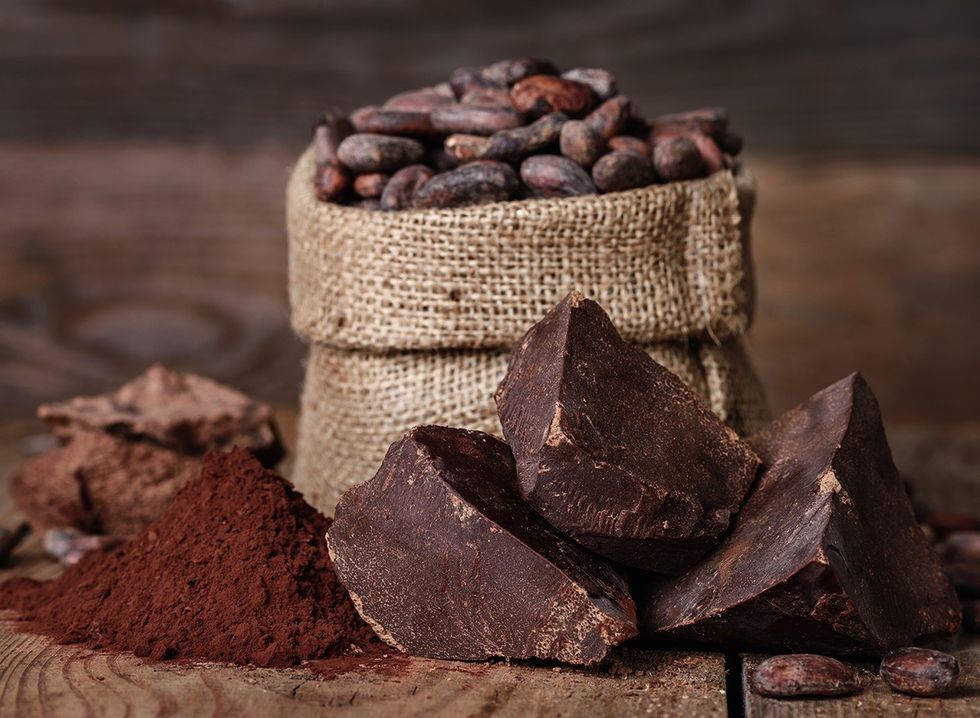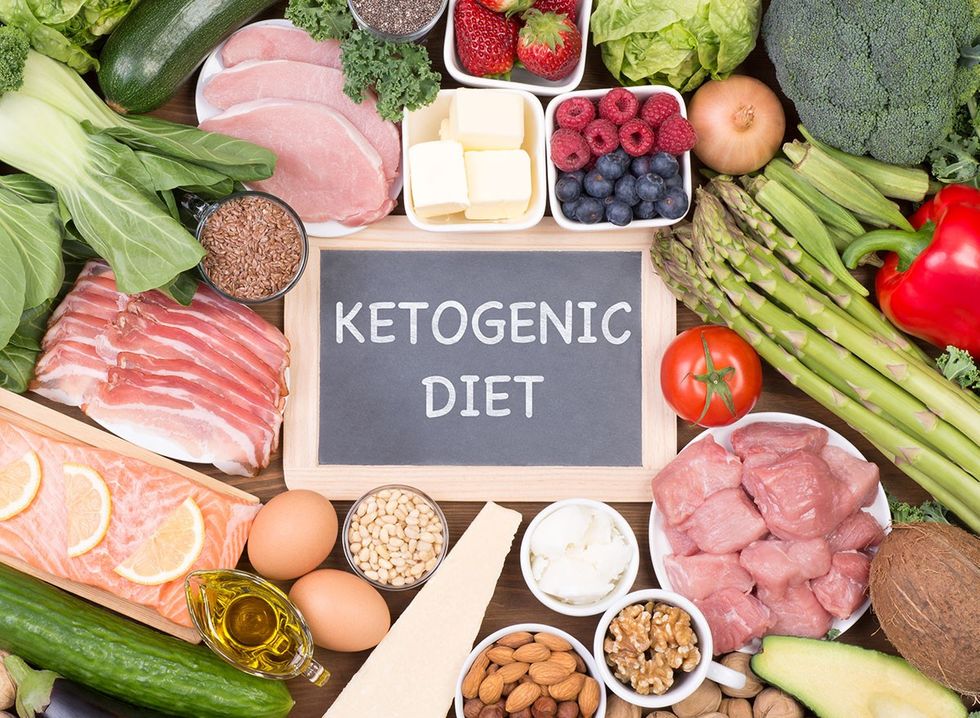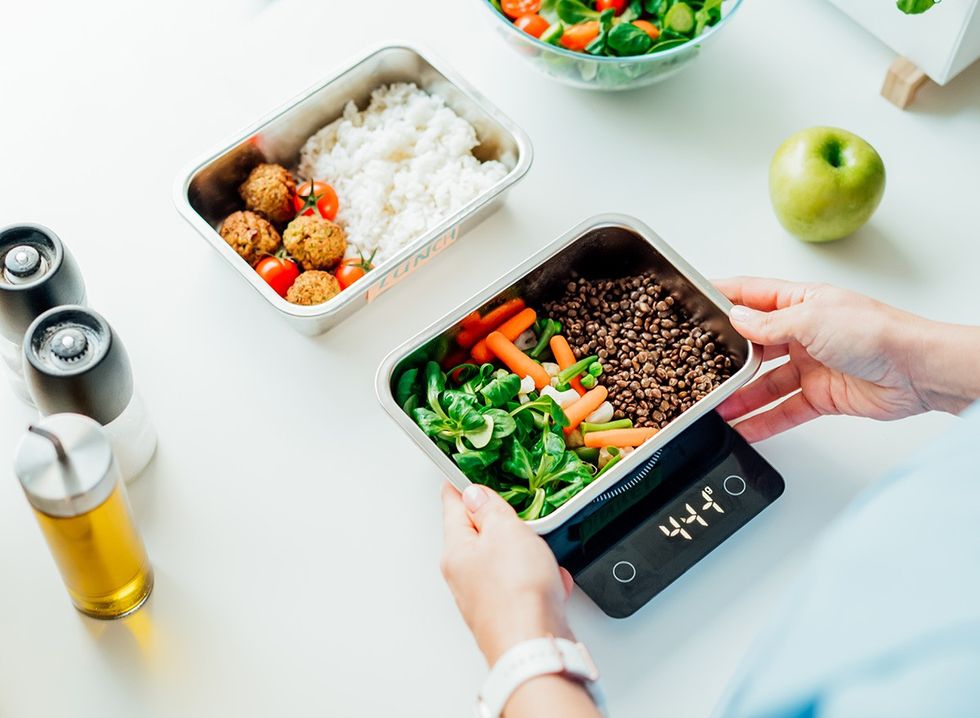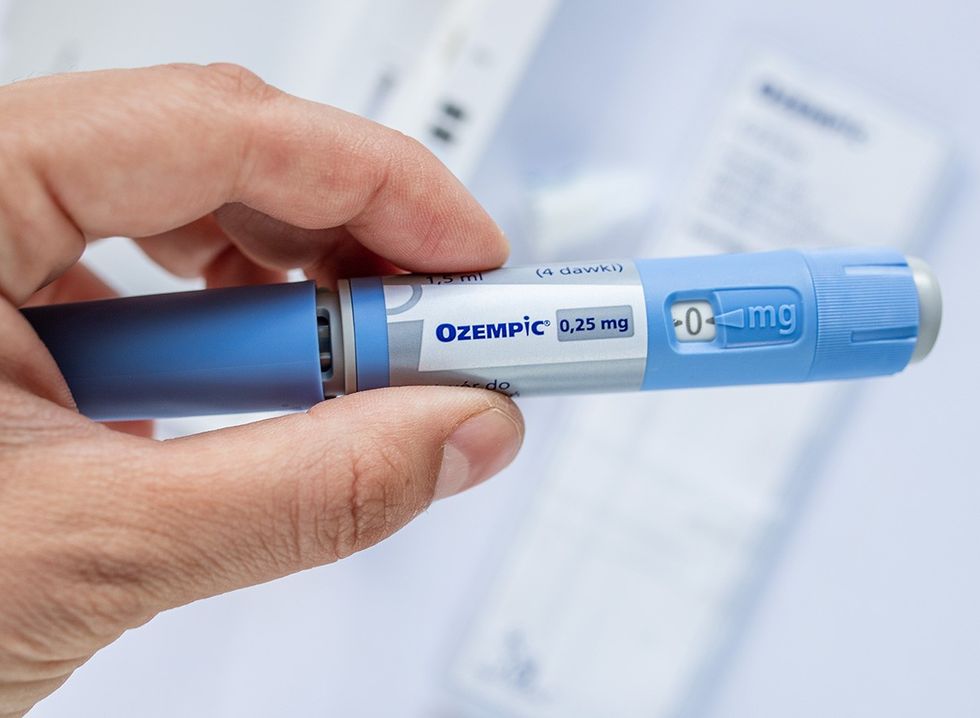If you’ve lost a significant amount of weight after taking Ozempic or any other GLP-1 medication, it might feel like the real battle is only just beginning. Many people find eating less to be easy while on the drug because the active ingredient semaglutide severely curtails appetite and food cravings, shutting down what’s referred to as “food noise.” But what happens when you stop taking the medication? It’s important to focus on healthy, satiating, and delicious whole foods that are part of a new lifestyle, not a fad diet. Here are 15 foods to help sustain weight loss after taking Ozempic.
Chicken and Turkey

Lean meats are an excellent choice for protein and satiety. “Chicken, turkey, and other protein-packed lean meats take more energy for your body to break down than carbohydrate or fat-rich foods, therefore burning slightly more calories during the digestive process,” says UnityPoint Health. “Low-fat cooking methods include broiling, roasting, sautéing, grilling and baking.”
All the Berries

Berries are so good for you—low in sugar and calories and packed with nutrients, they are a perfect snack. “From strawberries and blackberries to cranberries and blueberries, these gemlike fruits are particularly potent in antioxidant and anti-inflammatory activity,” says Harvard Health. One cup of strawberries has just 7 grams of natural sugar.
Greek Yogurt

Greek yogurt is packed with protein and versatile—it can be breakfast or a snack at any time, and pairs well with many fruits or whole grains. “Greek yogurt is an excellent source of protein and a great option if you’re looking for something quick, filling, and portable,” clinical nutritionist Heather Hodson, RDN, CDCES at NYU Langone Health, tells Vogue.
RELATED: 20 Incredible Ozempic Success Stories of All Time
The Humble Egg

Don’t overlook eggs for your post-Ozempic diet. High in protein and healthy fats, eggs are a nutritional powerhouse that contains choline and B vitamins. Enjoy them boiled or poached to keep the calorie count down.
Oatmeal

Oatmeal is affordable and versatile. “This is a powerhouse full of fiber that will not only help you last through the morning without hunger but will slow down the release of sugar into your bloodstream,” says UnityPoint Health. “Start the day with a hot bowl of oatmeal in the morning or make overnight oats the night before in a mason jar for an on-the-go breakfast.”
Fermented Foods

Fermented vegetables are good for your gut and your waistline. “Fermented products may deactivate substances in other foods dubbed ‘antinutrients,’ which can inhibit the absorption of essential nutrients such as iron, zinc, and vitamins B12 and K,” says Harvard Health.
RELATED: 20 Things You Need to Know About Ozempic and Weight Loss
Guacamole

Avocados are high in satiating healthy fats. “The powerful combination of fat and fiber has another benefit: It helps you feel full longer,” registered dietitian Charlotte Roberts says via Cedars-Sinai. “In fact, a 2013 study found that overweight adults who added half a fresh avocado to their lunch were less likely to feel hungry after eating.”
Fish and Shellfish

Fish and shellfish are both excellent sources of protein. “A healthy, balanced diet should include at least 2 portions of fish a week, including 1 of oily fish,” says the NHS. “That's because fish and shellfish are good sources of many vitamins and minerals. Oily fish – such as salmon and sardines – is also particularly high in long-chain omega-3 fatty acids, which can help to keep your heart healthy.”
Dark Chocolate

Yes, you can still enjoy the occasional treat on your post-Ozempic diet. High-cocoa dark chocolate is hard to overeat, and contains antioxidants. Dark chocolate also contains zinc, copper, iron, and magnesium.
Drink Your Water

“Water can suppress your appetite and maybe boost your metabolism for a short amount of time,” says UnityPoint Health. “Research suggests the more hydrated you are, the better able your body is at just about everything from thinking to making exercise easier.”
RELATED: What Happens to Your Body When You Stop Taking Ozempic
Don’t Be Afraid of Healthy Fats

Healthy fats are good for you and can help keep the pounds off. “Fat is satiating, so cutting it too low can lead to constant hunger,” registered dietitian Cynthia Sass tells TODAY. “When you cut fat too low, your carbohydrate intake generally increases, which can result in a surplus of unburned carbs that wind up feeding fat cells.”
Pistachios In the Shell

Pistachios are common in the Mediterranean diet, and full of nutrients. High in protein and healthy fats, pistachios are a decent snack or ingredient. “Pistachios have 13 grams of fat per serving, the majority of which (11.5 grams) comes from heart-healthy monounsaturated and polyunsaturated fats,” says the Cleveland Clinic.
Low-Starch Vegetables

Low-starch vegetables such as broccoli give great bang for the buck when it comes to calories vs volume. 100 grams of broccoli is a measly 50 calories, making it an ideal choice for a filling yet nutritious side or salad. Broccoli is also high in fiber and folate.
RELATED: 20 Possible Ozempic Side Effects
Celery

Want something crunchy that won’t derail your weight loss? Celery is your friend. “Two stalks of celery contain only 15 calories,” Allyn Wergin, RDN, tells Mayo Clinic Health System. “Aside from its low calorie count, celery contains dietary fiber, vitamin K, and small amounts of vitamins A and C, calcium and iron.”
Whole Grains

Whole grains are a good option as they tend to be higher in fiber. “Whole-grain foods help control cholesterol levels, weight and blood pressure,” says the Mayo Clinic. “These foods also help lower the risk of diabetes, heart disease and other conditions.”
💪🔥Body Booster: Consider this new way of eating a complete lifestyle, not a temporary fix.









 Shutterstock
Shutterstock Shutterstock
Shutterstock Shutterstock
Shutterstock Shutterstock
Shutterstock


 Shutterstock
Shutterstock






 Shutterstock
Shutterstock Shutterstock
Shutterstock Shutterstock
Shutterstock Shutterstock
Shutterstock Shutterstock
Shutterstock Shutterstock
Shutterstock Shutterstock
Shutterstock Shutterstock
Shutterstock
 If You Lose Weight Soley Because of Ozempic, You Are Likely Losing MuscleShutterstock
If You Lose Weight Soley Because of Ozempic, You Are Likely Losing MuscleShutterstock Amp Up Your Protein IntakeShutterstock
Amp Up Your Protein IntakeShutterstock Low-Carb Noodle SolutionShutterstock
Low-Carb Noodle SolutionShutterstock 2. Allulose: The Sweet SecretShutterstock
2. Allulose: The Sweet SecretShutterstock
 OrangesShutterstock
OrangesShutterstock Shutterstock
Shutterstock 19. OystersShutterstock
19. OystersShutterstock TurmericShutterstock
TurmericShutterstock
 Shutterstock
Shutterstock 44. Brussels sprouts: 43 caloriesShutterstock
44. Brussels sprouts: 43 caloriesShutterstock Shutterstock
Shutterstock 2. BisonShutterstock
2. BisonShutterstock 49. White fish (like cod): 48 caloriesShutterstock
49. White fish (like cod): 48 caloriesShutterstock Shutterstock
Shutterstock Shutterstock
Shutterstock Shutterstock
Shutterstock PapayaShutterstock
PapayaShutterstock You Eat Out Too MuchShutterstock
You Eat Out Too MuchShutterstock

 16. TofuShutterstock
16. TofuShutterstock AvocadoShutterstock
AvocadoShutterstock 5 Ways to Speed Up Your MetabolismShutterstock
5 Ways to Speed Up Your MetabolismShutterstock Shutterstock
Shutterstock Shutterstock
Shutterstock What Happens When You Quit Soda, According to a NutritionistShutterstock/Kmpzzz
What Happens When You Quit Soda, According to a NutritionistShutterstock/Kmpzzz 10. High-Calorie Coffee DrinksShutterstock
10. High-Calorie Coffee DrinksShutterstock Shutterstock
Shutterstock Sign 2: Pain Under Right RibsShutterstock
Sign 2: Pain Under Right RibsShutterstock

 I'm a Nutritionist and These 9 High-Protein Snacks Keep My Clients Full While Losing 50 Pounds
I'm a Nutritionist and These 9 High-Protein Snacks Keep My Clients Full While Losing 50 Pounds
 Shutterstock
Shutterstock 2. Processed FoodsShutterstock
2. Processed FoodsShutterstock Shutterstock
Shutterstock Shutterstock/Prostock-studio
Shutterstock/Prostock-studio Shutterstock
Shutterstock Pro TipsShutterstock
Pro TipsShutterstock Shutterstock
Shutterstock Shutterstock
Shutterstock Shutterstock
Shutterstock Shutterstock
Shutterstock Don’t Drink as Much AlcoholShutterstock
Don’t Drink as Much AlcoholShutterstock Most Women on GLP-1s Are Making a Few Common MistakesShutterstock
Most Women on GLP-1s Are Making a Few Common MistakesShutterstock Soda and Sugary DrinksShutterstock
Soda and Sugary DrinksShutterstock Shutterstock
Shutterstock Eat BreakfastShutterstock
Eat BreakfastShutterstock And Improve Insulin SensitivityShutterstock
And Improve Insulin SensitivityShutterstock Belly Flab Strip Tip: Sugar and Fat Calories Leave Its Mark on Your BodyShutterstock
Belly Flab Strip Tip: Sugar and Fat Calories Leave Its Mark on Your BodyShutterstock Shutterstock
Shutterstock The Drugs Mimic the GLP-1 Hormone Naturally Produced by the BodyShutterstock
The Drugs Mimic the GLP-1 Hormone Naturally Produced by the BodyShutterstock 3. Deep-Fried ItemsShutterstock
3. Deep-Fried ItemsShutterstock